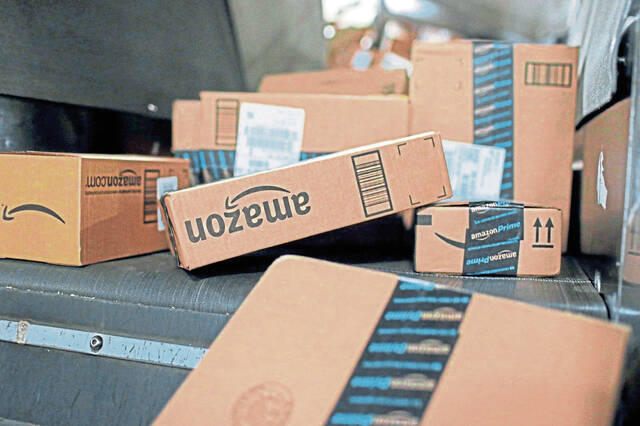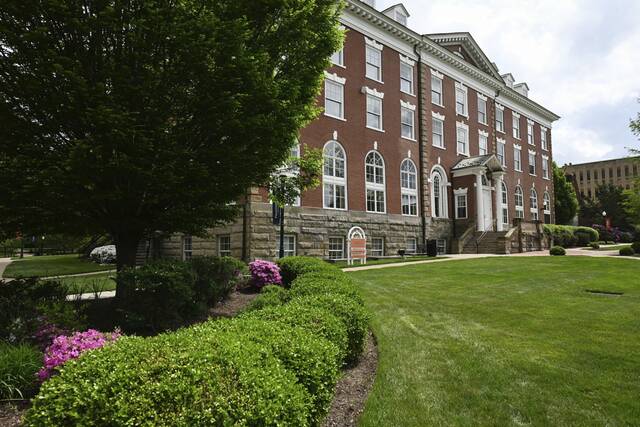Rising gas prices have been causing headaches for drivers across the region and the country. In early March, gas prices hit a record average of $4.21 a gallon in Pittsburgh, slightly above the national average of about $4 a gallon.
At some old-school gas stations in the region, such as Fink’s Pennzoil in Aspinwall, it seemed they were holding out on increasing prices. Fink’s Pennzoil in early March had markedly lower gas prices than larger service stations and chain stores.
But owner and operator Ed Fink said the discount was a result of the timing when he purchased the gas.
Fink’s is a full-service station — fill-ups come with window washes, fluid checks and air for tires — and most of their business is on repairs, not gas. Fink said he purchases one load of gasoline (8,500 gallons) every three to four weeks. That is a tiny fraction compared to chain gas stations, which Fink said usually purchase three loads a day.
So his previous load of gas was bought before crude oil prices jumped because of the war in Ukraine, and his customers were able to enjoy a lower rate for a short time until that load was depleted.
But eventually, he bought another load of gas under the new and higher prices, so he adjusted his prices accordingly. As of March 17, Fink’s prices were $4.25 a gallon.
“Then last week, when I had to buy gas, it went up a lot,” Fink said.
These situations can confuse gas customers, who are looking for answers and hoping gas prices will decrease.
What is causing these spiking gas prices? And what can Pittsburgh drivers expect moving forward?
Cost breakdown
The cost of crude oil is the main driver of gas prices.
Crude oil accounts for 50 cents to 60 cents for every dollar spent on gasoline, said Jim Garrity of AAA East Central, which covers Pennsylvania.
The federal gasoline tax is about 18 cents per gallon. Pennsylvania’s gas tax is about 58 cents — second highest in the country, behind California.
Gov. Tom Wolf has joined federal and state lawmakers calling for a federal gas tax holiday.
Some state Republican lawmakers have called for Pennsylvania to suspend its gas tax.
That proposal would benefit consumers greatly, though it comes with consequences, Garrity said.
“The pro is for consumers,” he said. “And the con is thinking about how you are going to make up for that money. The gas taxes are going to fix the roads and bridges that we use everyday.”
Pennsylvania’s gas tax was last raised — under Republican leadership, in 2014 — as a way to stave off massive cuts to the state’s infrastructure spending and public transportation service. More than $4 billion has been siphoned for the state police budget, according to a 2019 report from the state auditor general.
Rising gas prices
For several months, crude oil prices had been increasing — and thus gas prices, Garrity said. By mid-February, crude oil prices had reached nearly $100 a barrel.
Then Russia invaded Ukraine.
Oil prices spiked.
In early March, crude oil prices eclipsed $120 per barrel. This caused gas prices to rise quickly, leading to sticker shock for many drivers, Garrity said.
“Now that the U.S. is cut off from Russian oil exports, supply has the potential to become more limited and markets reacted as such,” said Nicole Petersen, a spokeswoman for GasBuddy.com. “Any changes in the situation have the ability to impact gas prices, sending them higher.”
Related:
• Diesel price rise a pain at pump and consumer’s pockets
President Biden on March 8 banned imports of Russian oil. The U.S. is still the top producer of oil in the world, with America keeping much of its oil for domestic use. In theory, this should negate the domestic impact of Russian oil.
Oil, however, is a global market — of which Russian oil makes up about 13%.
“It is so volatile, you could call tomorrow and it could be a completely different story,” Garrity said.
Demand control
There also is the demand side.
While the war in Ukraine is affecting supply globally, American demand for driving is likely to increase as the weather warms and road trips are taken.
GasBuddy has seen “no destruction of demand over the last few weeks, even as prices soared across the U.S.,” Petersen said.
Pittsburghers, however, soon will see a summer blend of gasoline, which contains additives to help reduce evaporation and emissions during the warm months. It is more expensive than the winter blend.
Combine that with increased demand, and it’s likely that gas prices in the region will go up a bit more, Garrity said.
$5 per gallon?
It’s important to remember that, while gas prices in Pittsburgh eclipsed $4.50 in some locations, current prices are not a historically high burden.
When adjusting for purchasing power and more fuel-efficient vehicles, Pittsburgh — and the nation — really suffered from gas prices in the early 1980s.
Factoring in those variables, along with some others, the average price per gallon per mile driven back then was above 30 cents. Today, it is about 17 cents. Gas prices per gallon per mile driven were about 20 cents between 2011-14.
Experts see gas prices increasing in the coming months.
Will they rise high enough to reach historic levels of cost burden on Pittsburghers? And will average gas prices eclipse the $5 a gallon mark?
Gas prices remain fluid, but $5 a gallon on average is not necessarily likely, Petersen said.
“As prices rose last week, we came quite close to a $4.50 per gallon average. But as oil prices have dropped, gas prices appear to have peaked last week at $4.35 on March 11,” Petersen said. “The worst may be behind us, but we’ll likely see prices elevated for months.”
Oil prices have been plummeting the last few days. They dropped below $100 a barrel March 14.
Gasoline prices, however, still haven’t dropped. Biden has called out oil and gas companies for not dropping gasoline prices as quickly as they increase them when oil prices spike.
Giant Eagle runs hundreds of GetGo gas stations throughout the region. Company spokesman Dick Roberts said retail gasoline prices are “not wholly determined by retailers, but rather driven by market value and commodity costs.” He said the timing of when customers might see changes in prices can vary and may take days or weeks.
“A variety of factors impact the market value of crude oil, including — but not limited to — the balance of supply and demand as well as global conflict,” Roberts said.
Giant Eagle recently extended fuel perks expiration through 2022, especially in response to help customers save on gas prices.
Drivers might want to make choices to help alleviate high gas prices, such as carpooling or driving more fuel efficiently if possible, Garrity said. He added that drivers also should be more consistent when driving. Slamming on the gas and brakes burns fuel less efficiently, as does speeding.
He noted that many Pittsburgh roads have speed limits under 40 mph and that driving over 50 mph is when fuel starts to burn less efficiently.
“And for what, saving two minutes on the trip,” Garrity said. “There is no real advantage to speeding.”








